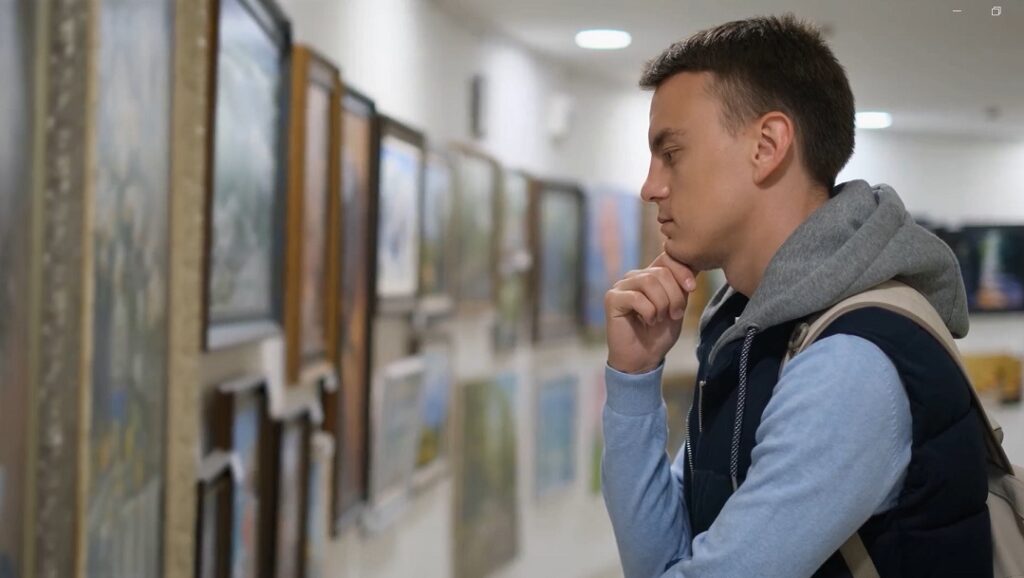There is a question that has been tossed around by philosophers and art critics for decades: how much should an artist’s intention affect your interpretation of the work? Do the artist’s plans and motivations affect its meaning? Or is it completely up to the judgment of the viewer?
Watch the video:
and decide if the sentences below are true or false:
1. The author believes that understanding an artist’s intentions is essential for appreciating their work.
2. W K Wimsatt and Monroe Beardsley argued that the intentions of an artist should not influence the interpretation of their art.
3. The author suggests that different interpretations of art can lead to a consensus on its meaning.
4. Stephen Knapp and Walter Ben Michaels contend that an artist’s intended meaning is the only valid interpretation of their work.
5. The author compares the interpretation of art to the enjoyment of a dessert, where the creator’s intentions are irrelevant.
6. Contemporary philosopher Noel Carroll posits that an artist’s intentions are significant in the same way as a speaker’s intentions in conversation.
7. The author concludes that there is a definitive answer regarding the role of artistic intention in interpretation.
Key: 1F; 2T; 3F; 4T; 5T; 6T; 7F
Glossary
- to toss around – if you toss ideas, suggestions, or phrases around, you mention them and discuss them with other people
- bounty – something that is provided in large amounts
- fallacy – a false or mistaken idea
- to lean toward(s) (a particular idea, belief, or type of behaviour) – to have a tendency to think or act in a particular way
Practice makes perfect
Word formation: Change the word in CAPITALS to fill in the blanks
Being 1. …………. [CREATE] is not the same thing as being an artist–and vice versa.
In fact, the two titles share more 2. ………..s [DIFFER] than they do 3. …………s [SIMILAR]. A 2010 IBM survey of 1,500+ CEOs from 4. ……….. [VARY] fields ranked creativity as being a crucial pillar of every successful company. Of all the CEOs surveyed, 60% said that creativity ranked higher than even integrity and global thinking. But when asked to define that 5. ……….. [ELUDE] word, “creativity,” no two responses were the same.
The 6. ………. [TRUE] is, the definition of what it means to be “creative” seems to be 7. ………… [PAIN] subjective. Add in the 9. …………… [COMPARE] to art, and what it means to be “artistic” and you’ve just set yourself up for a longwinded conversation that appears to have no end. (…)
By definition, artistry and artistic ability is the 9. ……….. [CULTIVATE] of skills and talents honed toward creating fine works of art: painting, drawing, sculpting, musical composition, etc. In short: art is an original creation with the 10. ……….. [INTEND] of sparking an emotion or response in the viewer, listener, etc.
Conversely, creativity and creative ability is defined as the skill of pooling together different elements to find a solution to a problem. A perfect example would be advertising: creative thinking and 11. ………….. [ORIGINAL] geared toward delivering a business result. (…)
What I have concluded so far is that the two are not the same: art and creativity. They certainly share similarities and plenty of overlap, but the pursuits and deeper skill sets are actually quite opposite.
In order to check your answers/read the whole article, go to: https://www.inc.com/nicolas-cole/are-you-creative-or-are-you-an-artist-you-might-be-neither.html
Key: 1. creative; 2. differences; 3. similarities; 4. various; 5. elusive; 6. truth; 7. painfully; 8. comparison; 9. cultivation; 10. intention; 11. originality
Discuss:
- Do you like modern art?
- Do you ever think a lot of art is not really art?
- Do you have a favorite artist?
- Do you think anyone can be an artist or do you need a special talent?
- Do you have any artistic talents?
Watch and revise!
Who decides what art means?
Art Lesson
https://www.cloud.worldwideschool.pl/index.php/s/TrBqz37C7AMxm6b
(5526)






